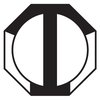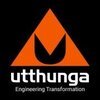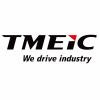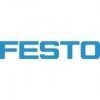Filter interviews by
Minda Silca Engineering Mechanical Engg. Design Interview Questions and Answers
Minda Silca Engineering Mechanical Engg. Design Interview Experiences
1 interview found
(2 Questions)
- Q1. How much Creo knowledge you have?
- Ans.
I have intermediate level knowledge of Creo.
I have completed a course on Creo and have used it for several projects.
I am proficient in creating 3D models, assemblies, and drawings using Creo.
I have experience in using Creo for simulation and analysis.
I am familiar with the user interface and various tools in Creo.
I am always eager to learn more and improve my skills in Creo.
- Q2. Do you know SAP and ERP?
- Ans.
Yes, I am familiar with SAP and ERP.
I have experience working with SAP and ERP systems in my previous job.
I am proficient in using SAP for inventory management and ERP for project management.
I have completed a course on SAP and ERP during my education.
I understand the importance of these systems in streamlining business processes and improving efficiency.
Interview Preparation Tips
Skills evaluated in this interview
Top trending discussions






Interview questions from similar companies

Interview Questionnaire
6 Questions
- Q1. What's the purpose of alloy steel and types of it ?
- Ans.
Alloy steel is used for its high strength and durability. It is made by adding other elements to iron.
Alloy steel is made by adding other elements to iron to improve its properties.
It is used for its high strength, durability, and resistance to corrosion.
Some common types of alloy steel include stainless steel, tool steel, and high-strength low-alloy steel.
Stainless steel contains chromium and nickel, making it resista...
- Q2. Derive the expression of hoop stress and longitudinal stress in pressure vessel ?
- Ans.
Derive expressions for hoop stress and longitudinal stress in a pressure vessel.
Hoop stress is the circumferential stress in the cylindrical wall of the vessel and is given by σh = pd/2t
Longitudinal stress is the axial stress in the cylindrical wall of the vessel and is given by σl = pd/4t
Where p is the internal pressure, d is the diameter of the vessel, and t is the thickness of the wall
These stresses are important in...
- Q3. Explanation of project and related question
- Q4. Industrial Training Experience
- Ans.
I completed my industrial training at XYZ company where I gained hands-on experience in designing and manufacturing processes.
Learned about various design software such as SolidWorks and AutoCAD
Assisted in the design and development of a new product
Worked with the manufacturing team to ensure designs were feasible and cost-effective
Gained knowledge of quality control and testing procedures
Improved my communication and ...
- Q5. If you will be given a task of technical calculation on the first day of job, How will you proceed ?
- Ans.
I would first gather all the necessary information and data required for the calculation and then proceed with the calculation process.
Gather all the necessary information and data required for the calculation
Understand the problem statement and requirements
Identify the relevant formulas and equations
Check for any assumptions or constraints
Perform the calculation accurately
Verify the results and ensure they meet the re
- Q6. Which thing you are more oriented on Engineering or Management ?
- Ans.
I am more oriented towards engineering as it is my core expertise.
My passion lies in designing and creating innovative solutions to engineering problems.
I have a strong technical background and enjoy working on complex engineering projects.
While I understand the importance of management skills, my primary focus is on utilizing my engineering skills to their fullest potential.
Interview Preparation Tips
Experience: 1. Aptitude Test:
Aptitude test was very tough. Questions from Logical, quantitative and english was there.
Logical Test was based on patterns, quantitative was calculation based and english was identifying synonyms etc.
2. Technical Test:
It was quite easy test. Questions from core mechanical subjects were there.
Tips: Make your full efforts in aptitude test.
Round: HR Interview
Experience: In HR question there was questions related to location constraints and similar things.
General Tips: Try to showcase your technical knowledge and whatever you have done during project and industrial training.
Skills: Aptitude, Technical Knowledge of Mechanical, Project and Training, Communication Skills
College Name: NIT JALANDHAR
Motivation: Siemens is a german company and having very good work culture. It is one of the best company in the world which provides complete power plant solutions.

Interview Questionnaire
1 Question
- Q1. Design calculation
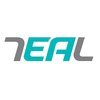
Mechanical Engg. Design Interview Questions & Answers
Titan Engineering & Automationposted on 25 Sep 2021
Interview Questionnaire
1 Question
- Q1. Convert 3d to 2d
- Ans.
Converting 3D to 2D involves projecting the 3D object onto a 2D plane.
Choose the appropriate projection method (orthographic or perspective)
Determine the viewing direction and angle
Project the 3D object onto the 2D plane using the chosen method
Remove hidden lines and surfaces
Add dimensions and annotations as necessary
Interview Preparation Tips
Skills evaluated in this interview

General mechanical engineering knowledge.
Quantitative aptitude
Verbal and nonverbal
(1 Question)
- Q1. Bearing selection Drive calculations Material selection Pneumatic
(1 Question)
- Q1. Salary discussion Notice period Salary negotiation
Interview Preparation Tips
Improve Design skills
Learn new design softwares

I appeared for an interview before Oct 2023.
(3 Questions)
- Q1. Gd&t details and use
- Ans.
GD&T stands for Geometric Dimensioning and Tolerancing. It is a system for defining and communicating engineering tolerances.
GD&T is used to specify the allowable variations in form, size, and orientation of part features.
It helps ensure that parts fit together properly and function as intended.
GD&T symbols include position, concentricity, perpendicularity, and more.
It is commonly used in mechanical engineering design ...
- Q2. Types of mfg proceed
- Ans.
Types of manufacturing processes include casting, machining, forming, joining, and additive manufacturing.
Casting: involves pouring molten material into a mold to create a desired shape (e.g. sand casting, die casting)
Machining: involves removing material from a workpiece using cutting tools (e.g. milling, turning)
Forming: involves shaping a material without removing any material (e.g. forging, stamping)
Joining: involv...
- Q3. Conveyor Type and whereto use
- Ans.
Conveyor types include belt, roller, chain, and screw conveyors, each suitable for different applications.
Belt conveyors are commonly used for moving large volumes of materials over long distances.
Roller conveyors are ideal for handling heavy loads and are commonly used in warehouses and distribution centers.
Chain conveyors are suitable for moving products through inclines or declines.
Screw conveyors are used for trans...
Interview Preparation Tips
Skills evaluated in this interview

Mechanical Engg. Design Interview Questions & Answers
Schneider Electricposted on 16 May 2024
I applied via Company Website and was interviewed before May 2023. There were 2 interview rounds.
(1 Question)
- Q1. Whati stress strain curve
- Ans.
A stress-strain curve shows the relationship between stress (force per unit area) and strain (deformation) in a material.
It is used to determine the mechanical properties of a material, such as its stiffness, strength, and ductility.
The curve typically consists of a linear elastic region, a yield point, a plastic deformation region, and ultimately failure.
Different materials exhibit different shapes of stress-strain cu...
(1 Question)
- Q1. What is your salary expectation

It consist of 40 questions which were from different sections as direction sense, blood relation, patterns, numerical ability and much more. Also last five questions were based on general knowledge l.
(2 Questions)
- Q1. What are your strengths and weaknesses?
- Q2. What is your family background?
Interview Preparation Tips

Mechanical Engg. Design Interview Questions & Answers
Schneider Electricposted on 15 Feb 2024
I applied via Walk-in and was interviewed before Feb 2023. There were 2 interview rounds.
(1 Question)
- Q1. Projection related question
(1 Question)
- Q1. Salary related question

Mechanical Engg. Design Interview Questions & Answers
Schneider Electricposted on 12 Nov 2024
(1 Question)
- Q1. Past experiences
(1 Question)
- Q1. Design where you will place this object in an assembly
Minda Silca Engineering Interview FAQs
Tell us how to improve this page.
Minda Silca Engineering Interviews By Designations
- Minda Silca Engineering Assistant Manager Interview Questions
- Minda Silca Engineering Design Engineer Interview Questions
- Minda Silca Engineering Regional Sales Manager Interview Questions
- Minda Silca Engineering Mechanical Engg. Design Interview Questions
- Minda Silca Engineering Deputy Tool Design Manager Interview Questions
- Minda Silca Engineering DIE Maker Interview Questions
Interview Questions for Popular Designations
- Mechanical Engineer Interview Questions
- Mechanical Designer Interview Questions
- Draughtsman Mechanical Interview Questions
- Senior Mechanical Design Engineer Interview Questions
- Lead Mechanical Engineer Interview Questions
- Mechanical Maintenance Engineer Interview Questions
- Diploma Mechanical Engineer Interview Questions
- Mechanical Technician Interview Questions
- Show more
Mechanical Engg. Design Interview Questions from Similar Companies
|
Assistant Manager
35
salaries
| ₹5.8 L/yr - ₹9 L/yr |
|
Production Engineer
29
salaries
| ₹2.3 L/yr - ₹4.4 L/yr |
|
Engineer
15
salaries
| ₹2.7 L/yr - ₹4.3 L/yr |
|
Senior Engineer
12
salaries
| ₹3.6 L/yr - ₹6.5 L/yr |
|
Deputy Manager
11
salaries
| ₹7.4 L/yr - ₹13 L/yr |

Siemens

Schneider Electric

Johnson Controls

Honeywell Automation
- Home >
- Interviews >
- Minda Silca Engineering Interview Questions >
- Minda Silca Engineering Mechanical Engg. Design Interview Questions

